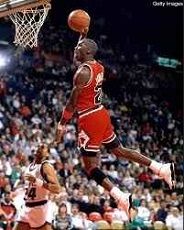ROTATION SUBSTITUTION IN BASKETBALL: The modern game allows an unlimited number of substitutions.
Even so, there are clear and specific procedures that all substitutes must follow.
This section outlines the fundamentals for basketball rotational replacements. The referee and officials govern substitutions in basketball.
The coach ‘strategically’ replaces or exchanges players during the match. Understanding how this works is one of the basic principles of the game.
All players should learn basketball’s proper switching rules. It is important to avoid receiving warnings, technical fouls, and penalties.
Entering the Court
A substitute player can enter the court to replace another teammate at any time. But, the player must first wait at the scorer’s table before entering the court.
Note: The official game scorer will ‘beckon’ to the sub to grant permission. The sub can then check on to the floor and into the game.
The scoreboard operator has the responsibility of notifying the officials that a player wants to be substituted. They will notify them by blowing the horn on the clock.
As a rule, the official game scorer wears a striped referee shirt. They sits at the scorer’s table situated near to the half court. Waiting replacements should communicate clearly with the scorers. Subs must provide them with their jersey uniform number to allow for adjustments in the score book.
Note: One important role of the timekeeper in basketball is buzzing in the substituted player at the time of the next dead ball.
 Strategic Timeouts
Strategic Timeouts
Basketball coaches will use timeouts and strategic half time substitutions to:
- Strengthen matchups against the other team.
- Rest tired players.
- Replace players who breach rule infringements.
Legal Substitutions
Further clarification comes from FIBA Official Basketball Rules PDF. Substitutes may enter the game only when the ball is dead and the clock is ‘intentionally’ stopped.
There is an exception allowed during the last minute of play. It applies in college basketball and when the clock stops after a ‘made basket’ in the National Basketball Association (NBA).
Note: A technical foul occurs if players swap and enter the game at any other time.
For this infraction, high school rules penalize the team by awarding two free throws and possession of the ball to the opposition.
The opposing team receives two free throws. The ball gets put back in play (to the team who had it last) in the college version. NBA regulations use similar penalties as college rules. But, it awards only one free throw to the opposing team.
When You Cannot be Substituted
Basketball substitution rules have restrictions during a free throw or jump ball situation and for certain injury incidents.
According to basketball regulations, you cannot substitute a free throw shooter or jumper (participating in a jump ball). An exception would apply if that player has an injury and unable to perform the procedure.
The switch must not take place until the next time the ball is dead and the clock has stopped – following the free throw or jump ball.
The team coach can choose the substitute who will replace an injured player in high school rules. But, in college and the NBA regulations, the opposing coach can ‘legally’ decide who get swapped for the injured player. They may choose from any member of the opposing team sat on the bench.

